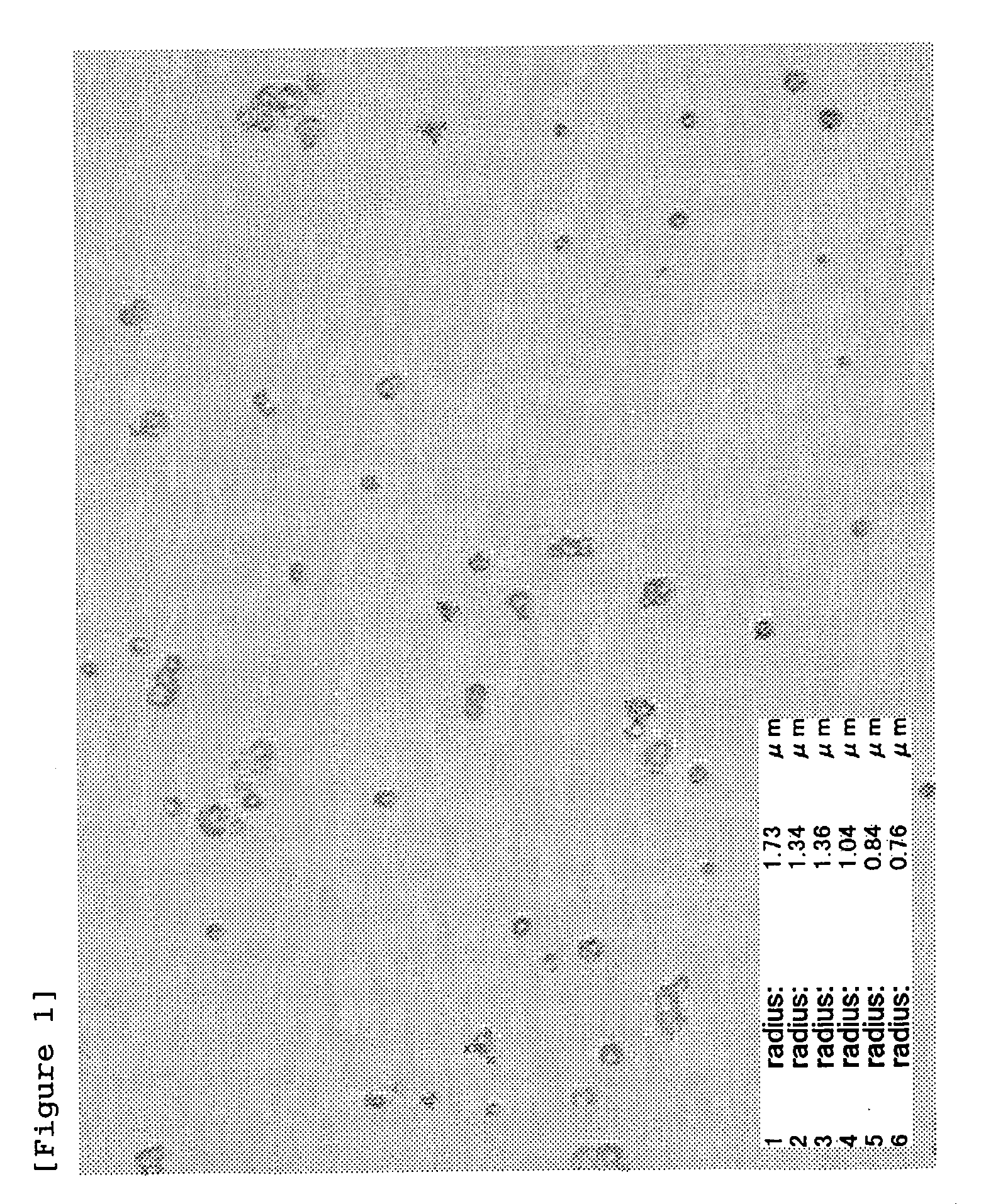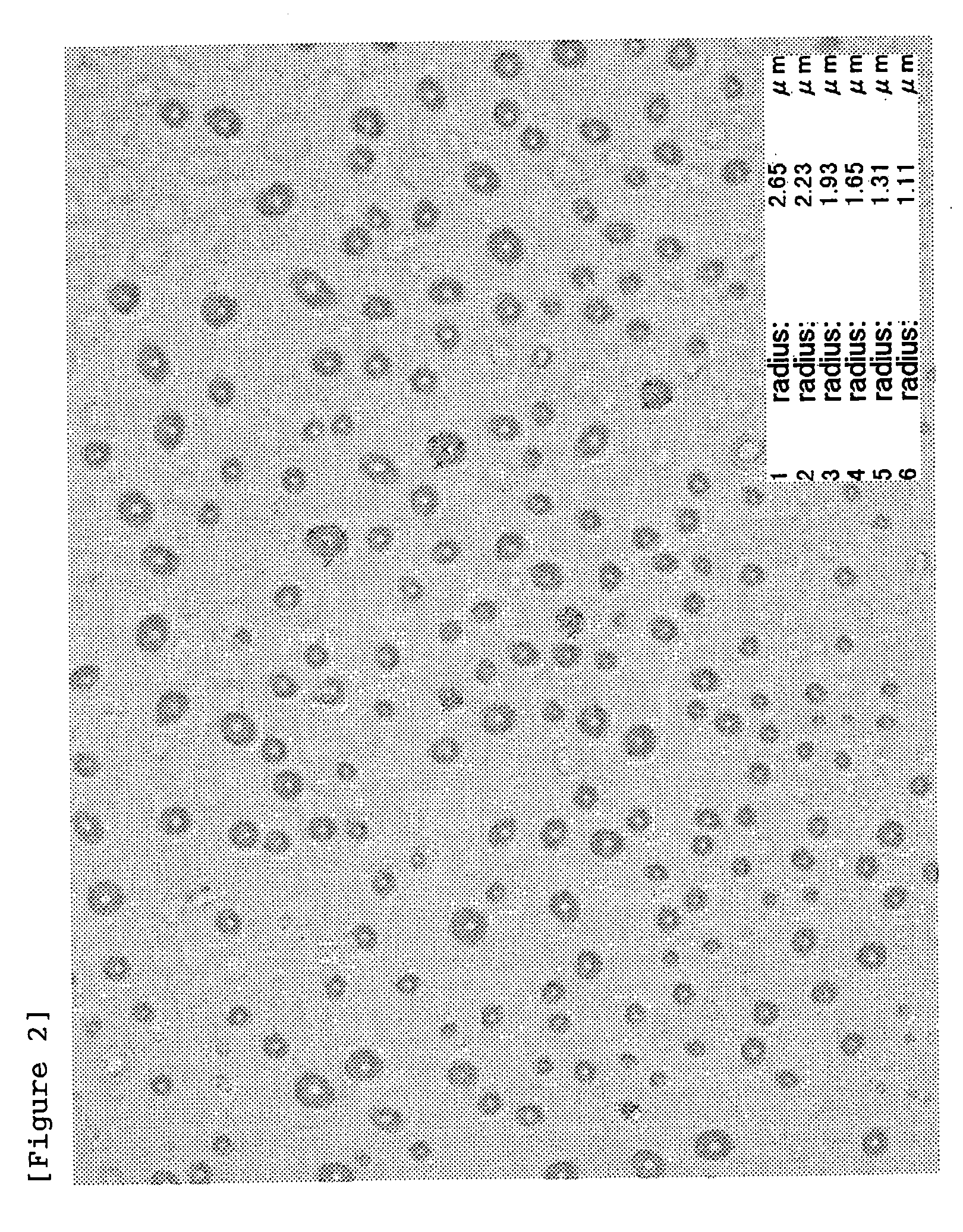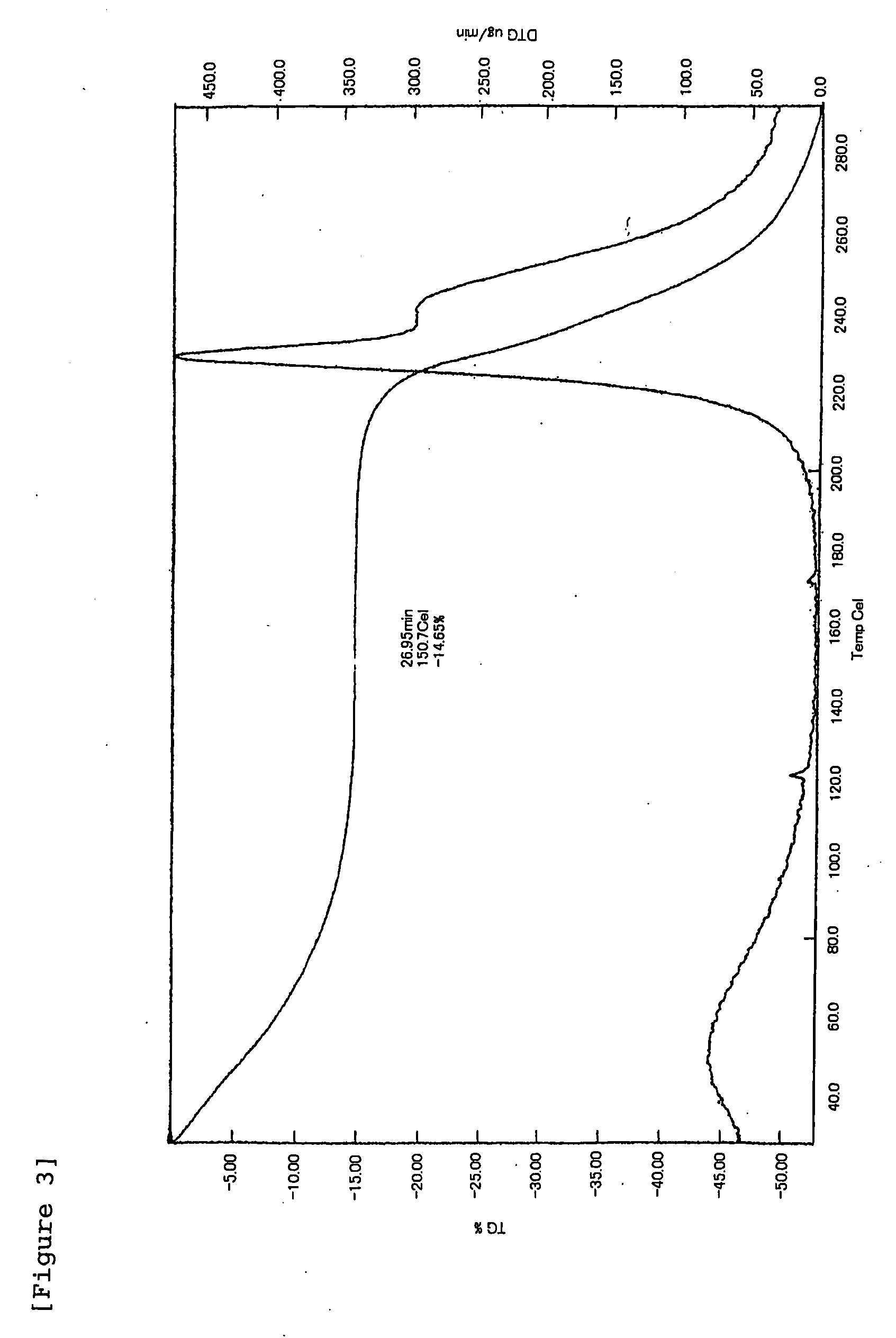Crosslinked polysaccharide microparticles and method for their preparation
a polysaccharide and crosslinked technology, applied in the field of sustained release drug carriers, can solve the problems of reducing recovery rate, short half-life, and imposing excessive burden on patients during drug administration, and achieve the effect of improving the recovery rate of the resulting microparticles and improving the efficiency of encapsulation
- Summary
- Abstract
- Description
- Claims
- Application Information
AI Technical Summary
Benefits of technology
Problems solved by technology
Method used
Image
Examples
example 1
Example 1-1
Synthesis of Hydrazide (HZ) Group-Modified Hyaluronic Acid Derivative (HA-HZ)
[0131]
[0132] Hyaluronic acid (HA) having a molecular weight of 1.9×105 daltons (200 mg, Denki Kagaku Kogyo Kabushiki Kaisha, Japan) was dissolved in distilled water at a concentration of 0.5% and adjusted with 5N hydrochloric acid to pH 4.7 to 4.8. 1-Ethyl-3-(3-dimethylaminopropyl)carbodiimide (EDC) and adipic acid dihydrazide (ADH) were added at a molar ratio of HA:EDC:ADH=1:0.3:40 (Batch 1-1), 1:1:40 (Batch 1-2) or 1:5:40 (Batch 1-3), and reacted while stirring at room temperature for 2 hours and adjusting the mixture with 5N hydrochloric acid to maintain a pH of 4.7 to 4.8. The reaction mixture was dialyzed against a 100 mM sodium chloride solution and a 25% ethanol solution (SpectraPor 7, molecular weight cutoff (MWCO): 12 k-14 k daltons) and lyophilized to give the titled HA-HZ.
[0133] The introduction rate of HZ groups in the resulting HA-HZ was determined for each batch by proton NMR, in...
example 1-2
Synthesis of Mercapto (SH) Group-Modified Hyaluronic Acid Derivative (HA-SH)
[0134]
[0135] HA-HZ obtained in Batches 1 to 3 of Example 1-1 (100 mg each) was dissolved in 5 mL of 100 mM phosphate buffer, pH 8 (HA-HZ: 2% w / v), followed by addition of iminothiolane (ITL) (at a molar ratio of HZ / ITL=1 / 2). The mixture was reacted while stirring at room temperature for 2 to 4 hours and then precipitated in ethanol, washed three times and dried. The introduction rate of SH groups in the resulting HA-SH was determined for each batch by proton NMR and the results obtained are shown in Table 1 (calculated by comparing N-acetyl groups in HA and HA-SH (1.9 ppm, 3H) and methylene groups in the ITL-derived moiety of HA-SH (2.1 ppm and 2.7 ppm, 2H each)).
[0136] [Table 1]
TABLE 1ControlBatch 1Batch 2Batch 3HZ introduction0%26%46%69%SH introduction0%20%35%56%
example 1-3
Preparation of EPO-Encapsulated Crosslinked Hyaluronic Acid Microparticles
[0137] HA-SH (introduction rate of SH groups: 20 mol %) obtained in Batch 1 of Example 1-2 (200 mg) and erythropoietin (EPO; 2 mg) were dissolved in 20 mL of 10 mM phosphate buffer (PB; pH 8) (stirring at room temperature for 1 hour), followed by addition of Tween-20 (4 mg) and sodium tetrathionate (STT; 22.3 mg, 1-fold molar amount relative to SH groups). This solution was spray-dried under the following conditions to obtain microparticles.
[0138] Spray dryer: Buchi Mini spray dryer B-191
[0139] Solution feed rate: 1.5 mL / min (Tygon tube, Pump speed 15%)
[0140] Feed solution concentration: 10 mg / mL
[0141] Atomizing air flow rate: 650 L / hr
[0142] Drying air flow rate: 40 kL / hr (Aspiration speed=65%)
[0143] Inlet temperature: 85° C. to 95° C.
[0144] Outlet temperature: 50° C. to 60° C.
PUM
| Property | Measurement | Unit |
|---|---|---|
| Particle diameter | aaaaa | aaaaa |
| Particle diameter | aaaaa | aaaaa |
Abstract
Description
Claims
Application Information
 Login to View More
Login to View More - R&D
- Intellectual Property
- Life Sciences
- Materials
- Tech Scout
- Unparalleled Data Quality
- Higher Quality Content
- 60% Fewer Hallucinations
Browse by: Latest US Patents, China's latest patents, Technical Efficacy Thesaurus, Application Domain, Technology Topic, Popular Technical Reports.
© 2025 PatSnap. All rights reserved.Legal|Privacy policy|Modern Slavery Act Transparency Statement|Sitemap|About US| Contact US: help@patsnap.com



